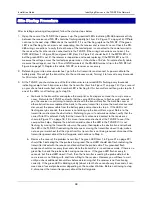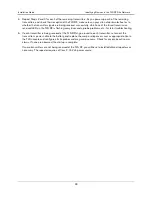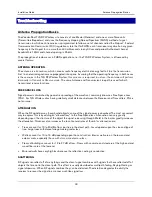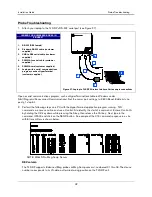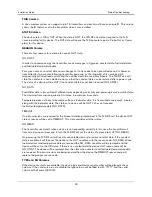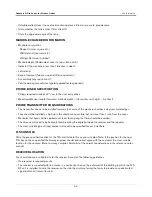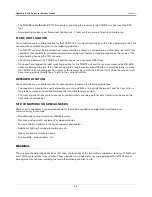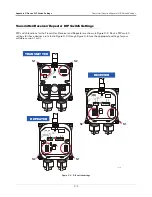
Appendix A: Site Survey for Wireless Probes
Key Information
A-3
• If double walled, does it have a leak monitoring device fitted, or are we to provide same
• State whether the tank is direct fill or offset fill
• State the approximate age of the tank
MANHOLE CHAMBER INFORMATION
• Manhole construction
- Shape (circular, square etc.)
- Wall material (concrete, etc.)
- Wall profile (smooth, ribbed)
• Manhole depth (Underside of cover to top surface of lid)
• Indicate if the manhole is less than 18 inches in depth
• Lid material
• Ease of removal (Two-man, special lifter required etc.)
• Accessibility (any restrictions?)
• Vehicle parking (are vehicles regularly parked for long periods)
PROBE RISER SPECIFICATION
• Fittings required to adapt a 2” riser to the riser entry orifice
• Max allowable riser length (formula = manhole depth – [transmitter unit height – 3 inches])
PROBE TRANSMITTER CONSIDERATIONS
• The transmitter needs to be installed towards the centre of the manhole chamber, away from metal edges.
• They should be installed as high up in the chamber as possible, but no closer than 1 inch from the cover.
• Manholes that have vehicles parked over them for any length of time should be avoided.
• The antenna will need to be horizontal and bisecting the angle between the receiver and the repeater
• The most suitable type of fixing bracket will need to be specified for each manhole.
TLS CONSOLE
State the pre-specified location for the TLS and indicate this on your site plan. Note: If the position for the new
TLS has not been specified the Survey engineer should advise and agree with the customer the most suitable
location for the console. (Note to survey compiler: Add a list of the normal considerations in the reference notes
section)
RECEIVER LOCATION
You should choose a suitable site for the receiver, based on the following guidelines:
• One receiver is required per site
• The receiver is mounted with its antenna in a vertical position on the outer wall of the building in which the TLS
RF unit is installed. Locate the receiver on the side the structure facing the tanks to provide an unobstructed
signal path to all transmitter units.






